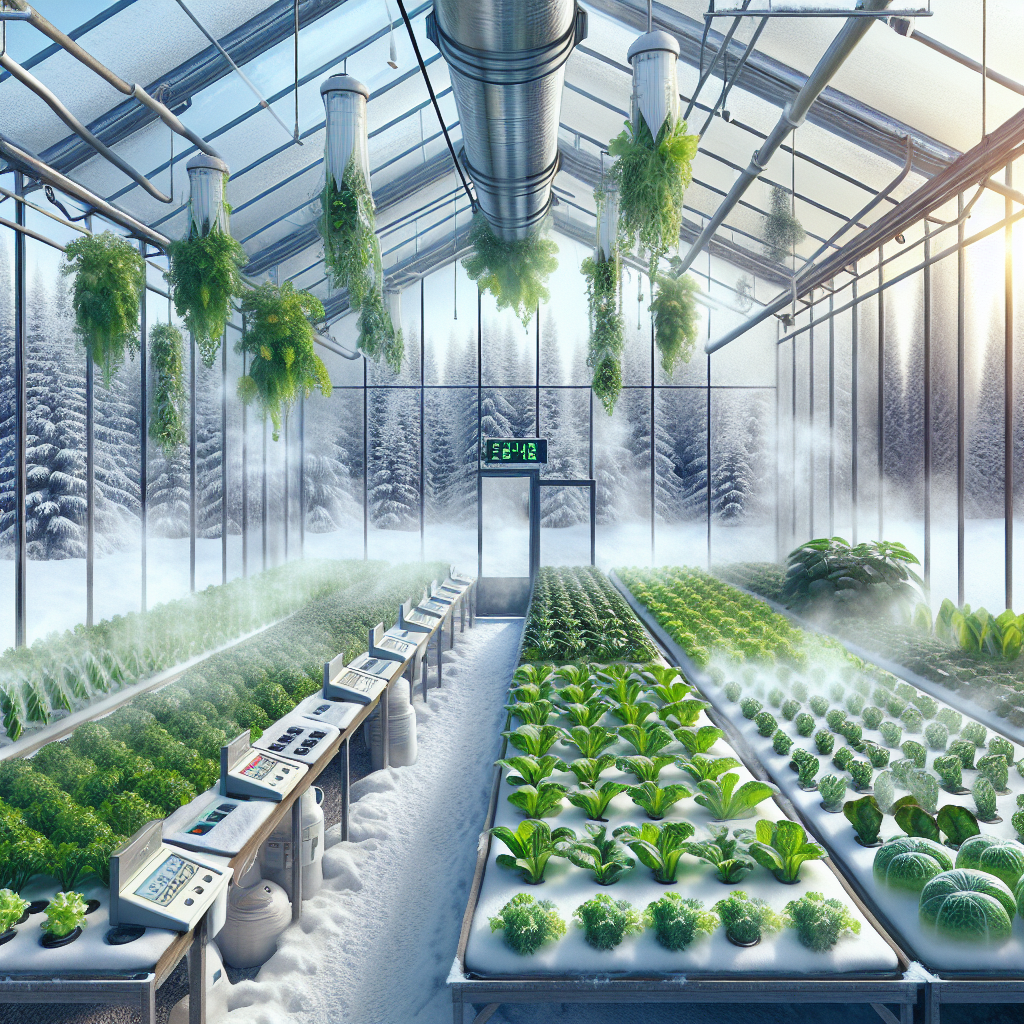
As the winter months approach, it becomes crucial to take preventive measures to protect your greenhouse crops from potential diseases. With the colder temperatures and increased humidity, your plants are more susceptible to harmful pathogens that can hinder their growth and productivity. In this article, we will explore effective strategies and techniques to ensure the health and vitality of your winter greenhouse crops, allowing you to maximize their potential and enjoy a bountiful harvest.
Crop Selection
In order to prevent disease in your winter greenhouse crops, it is important to make wise choices when selecting what to grow. One key consideration is to choose disease-resistant varieties. These are plants that have been specifically bred to have increased resistance to common diseases. By selecting these varieties, you can reduce the likelihood of your crops succumbing to disease. Another factor to consider is the length of the growth cycle. Selecting crops with shorter growth cycles means that they will spend less time in the greenhouse, reducing the risk of disease buildup.
Crop Rotation
Crop rotation is an effective method for minimizing disease buildup in your greenhouse. The idea behind crop rotation is to avoid planting the same crop families in consecutive seasons. This is because different crops have different nutrient requirements and are susceptible to different diseases. By rotating your crops, you can help break the disease cycle. When planning your crop rotation, it is important to consider which crops are complementary and will help replenish the soil with necessary nutrients.

Proper Sanitation
Maintaining proper sanitation practices in your greenhouse is crucial for disease prevention. Start by cleaning and disinfecting all greenhouse structures and equipment before the start of each growing season. This helps eliminate any pathogens that may have built up during the previous season. Additionally, it is important to remove and dispose of all crop debris. Dead plant material can harbor disease-causing organisms, so it is essential to keep the greenhouse clean and free of debris.
Temperature and Humidity Control
proper temperature and humidity control is essential for creating an environment that is less conducive to disease development. It is important to maintain appropriate temperature and humidity levels for the specific crops you are growing. Avoiding extreme temperature fluctuations is also crucial, as rapid changes in temperature can stress your plants and make them more susceptible to diseases. Investing in a reliable heating and cooling system for your greenhouse will help ensure that the temperature and humidity levels remain within the desired range.

Air Circulation
Adequate air circulation within the greenhouse is another important aspect of disease prevention. Poor air circulation can create stagnant areas where disease-causing organisms can thrive. To improve air circulation, make sure there is sufficient space between your plants and avoid overcrowding. Installing fans can help enhance airflow and prevent the buildup of stagnant air. Good air circulation not only helps reduce disease risk but also promotes healthy plant growth.
Watering Techniques
Proper watering techniques play a significant role in preventing disease in winter greenhouse crops. Overhead watering, where water is sprayed onto the foliage, can create a favorable environment for diseases to spread. It is best to avoid this method and opt for drip irrigation or bottom watering instead. Drip irrigation allows water to be delivered directly to the roots, reducing the risk of spreading pathogens. Bottom watering, where plants absorb water from a tray or container, can also be an effective method for preventing disease by keeping the foliage dry.
Integrated Pest Management
Implementing an integrated pest management (IPM) program is a proactive approach to disease prevention in your greenhouse. IPM focuses on using a combination of strategies to control pest populations, including biological control methods. This involves introducing natural predators or beneficial insects that feed on the pests causing damage to your crops. By managing pest populations effectively, you can indirectly reduce the risk of diseases that may be transmitted by pests.
Proper Nutrient Management
Providing your crops with balanced nutrient solutions is essential for their overall health and disease resistance. Over-fertilization can actually weaken plants and make them more susceptible to diseases. It is important to follow recommended fertilization guidelines and regularly test your soil to determine its nutrient content. By maintaining proper nutrient levels, you can promote healthy plant growth and increase their ability to fight off diseases.
Regular Monitoring
regularly monitoring your plants and the environmental conditions in your greenhouse is vital for disease prevention. Inspect your plants for any signs of disease, such as wilting, discoloration, or abnormal growth. If you identify any issues, take immediate action to prevent the spread of disease. In addition to plant monitoring, it is important to regularly check and adjust environmental conditions such as temperature, humidity, and airflow. Keeping a close eye on your greenhouse will help you catch any problems early on and take the necessary steps to prevent disease development.
Training and Education
Staying updated on best practices for disease prevention is crucial for successful greenhouse crop management. Continuing education in this field can help you stay informed about the latest techniques and advancements in disease prevention. Consider attending workshops or courses that specifically focus on greenhouse crop management and disease prevention. These opportunities will provide you with valuable knowledge and skills that you can apply to your own greenhouse. By continuously learning and improving your understanding of disease prevention, you can ensure the long-term health and success of your winter greenhouse crops.

